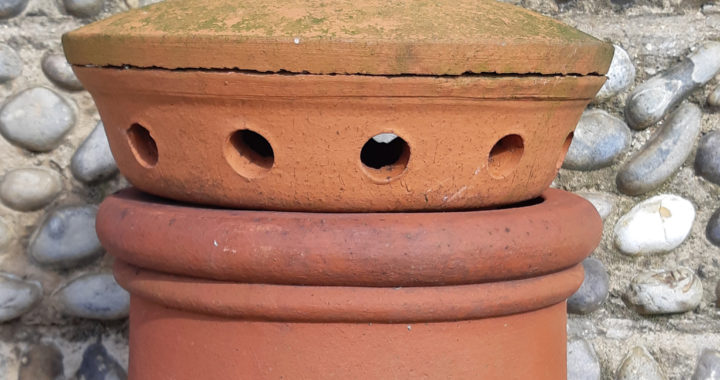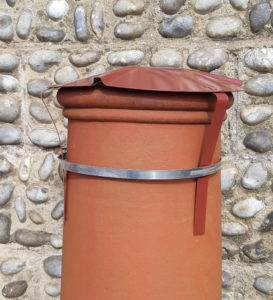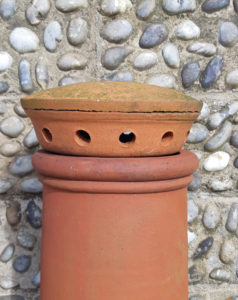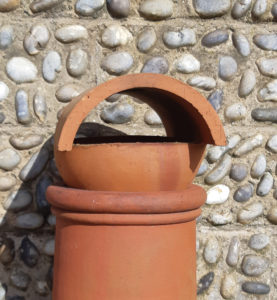Chimney cowls are an important component of any fireplace or stove installation, but with so many different types on the market, how can you be sure you’ve got the right one? This post will deal with one of the most common mistakes made – cowls for disused chimneys on live stoves and fires!
If you have a fireplace that is not in use, but has an open chimney, it is a good idea to get the chimney ‘capped’ to avoid unwanted visitors. Birds (and especially Jackdaws) like to nest in disused chimneys, and with them can come unbelievably large nests if left alone. It is also sensible not to allow the disused flue to be open to the elements, but to still maintain a flow of air to prevent dampness or stagnation.
The cowls below are suitable for disused fireplaces only. If you have one of the following fitted to a chimney that is in use, it could potentially be very dangerous and should be changed immediately.
Chimney capper
The chimney capper is a simple dish shaped metal plate that goes on the top of the pot with straps extending down to enable it to be secured via a long worm-drive band. The raised ridges provide a flow of air (presuming the disused fireplace is ventilated) to prevent air stagnating or condensing within the chimney.
Flue vent cap
This is a clay terracotta cap that drops into the chimney pot. The weight of it is sufficient to negate any need for further securing, although sometimes a bead of mastic is applied. Again it provides ventilation, and allows rain and hail to run off with the dome top.
Bonnet Insert
We find more bonnet inserts on chimneys that are in use than any other type of capper! Because of it’s comparatively wide opening, those people unfamiliar with cowls assume it is suitable for a working flue. The flow of combustion gases (be it solid fuel or gas) can be slowed by the restrictive nature of this type of cowl, and can often be attributed to ‘smokey’ fires and poor flue flow.
If you have any of the above (and these are just the most common ones) on a working chimney, then we recommend you arrange a site survey with us as soon as possible. Have us fit the correct cowl, suitable for the type of fuel you are burning, so you can continue using your appliance safely.





